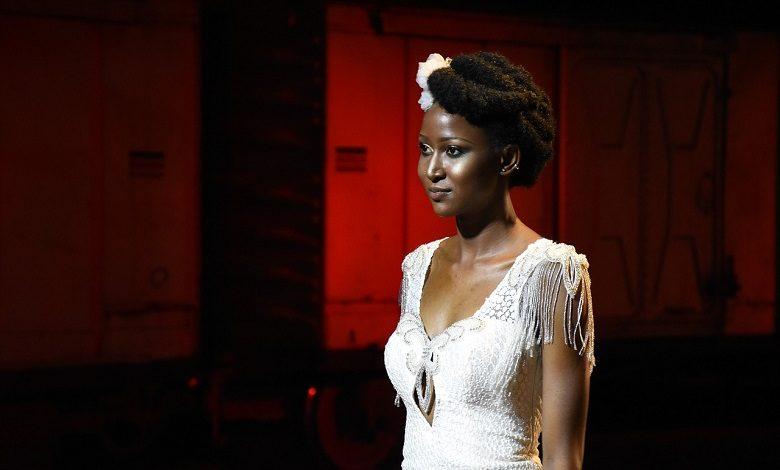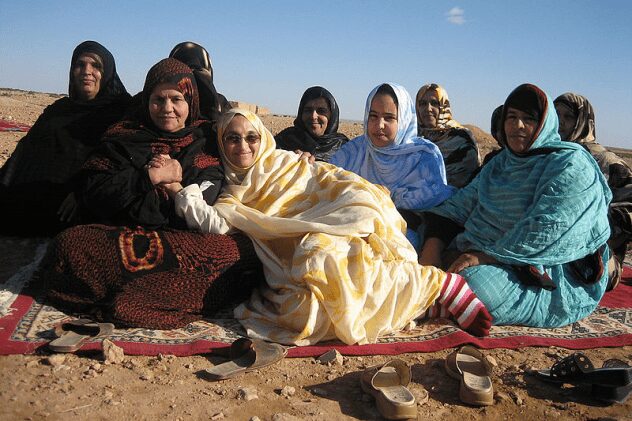Top 5 crazy bridal preparation customs in Africa

African marriage practices are no easy task, and in some cultures, nothing is left to chance. In some parts of the continent, some bizarre bridal methods are less known.
There are various customs around the black continent, intended to ensure that from the beginning of her married life, a woman radiates nothing but perfection.
Most of this effort is aimed at making the man and his family happy with their choice for a new addition to their family.
Some crazy bridal preparation customs in Africa
1. Zanzibari Bride custom
At the days following up to her wedding, a Zanzibari bride is pampered in a way that suits a fairytale princess. First, there is a particular cabin for her. She will spend about a month in seclusion inside this hut, away from the prying eyes of all the males. Qualified women usually stay with her in the hut, giving her advice and lessons on how to care for her new husband and at home. They make sure she knows how to keep her house clean, prepare food for her husband, entertain him, and even how to behave with her in-laws.
Two weeks before the wedding, qualified women prepare the bride’s body so that on the big day, everyone is fascinated by her beauty, especially her husband. She is given a daily body scrub, known locally as a “singo”. It is a natural shrub made from an infusion of spices, herbs, and delicate flowers. The central flowers used are usually fragrant jasmine, fragrant rosewater, and Cananga odorata (also called ylang-ylang), a yellow flower used all over the world for making perfume.
The main herbs used are the local sweet-smelling Mpatchori (a violet flower, fragrant geranium), Tanzanian sandalwood, and green, sweet basil leaves. The flowers and herbs are ground in a large wooden mortar with lots of rose water to form a smooth paste. Sometimes, when the girl comes from a wealthy family, honey and milk are added.
The brew is then rubbed on her whole body, except her hair. It marinates and exfoliates her skin, giving it a fragrant, silken, glowing allure. This makes her irresistible to her husband on the wedding night. She then gets relaxing massages with coconut oil and is showered with aromatic rose water. The hut is continuously filled with incense smoke to perfume her body and hair.

Second days before the wedding, henna is used to draw intricate designs on her hands, legs, and sometimes her back. Eventually, on the wedding day, she is dressed with colorful khangas or lessos, and she is ready to be presented to her husband. The ceremony usually takes place in the afternoon or at night and is generally attended by women. Perhaps the bride is too seductive for the men.
2. Zambian love-making Lessons
S^x is the foundation of many marriages because it creates the continuity of generations. The initial sign that a wedding is going down is usually a lack or cessation of s^xual intercourse between the couple. It is, therefore, not surprising that many forms of advice exist today on how to achieve optimal performance in this significant activity. While some people are reluctant to talk about it with their children and leave the children to their devices as they grow up, others teach their children the ups and downs of it before or during the marriage.
In some African countries, a woman cannot marry without such lessons. In the eastern part of Zambia, there is a well-known custom called Chinamwali, which is a practice of initiation for young girls aged about 11 and 12 years. It aims to teach young girls all the details they need to enter puberty. At the end of the three-month course, a girl should be qualified to treat any man s^xually. The primary thing taught in Chinamwali is s^x, although other things such as cooking skills and cleaning are also explained.
Graduates of these pieces of training are sworn to the oath of secrecy about the details of the age-old custom, but some have spilled the beans. Girls learn how to move their bodies in different s^xual positions. They are made to practice movements that can only be described as acrobatic, over wooden planks with protruding nails to discourage them from feigning fatigue. They learn to apply and use traditional herbs to make s^x more pleasurable for the husband.
They are also taught to lengthen their lips by pulling them until they reach the desired length. It is believed that this process should be done while the girl is young, and her body is still developing. Women from other parts of Zambia who do not practice Chinamwali have tried to “improve” their lips after their husbands threatened to divorce them for Chinamwali graduates. However, they have painfully learned that after a certain age, it turns terribly, causing swollen and sometimes damaged lips.
In the past, after the lessons, a girl had to go through a “tester”, which was preferably an old man and, therefore, more experienced. His role was mainly to check that the girl understood all the important aspects of Chinamwali, which primarily involved having s^x with her. If the girl was not, she had to return to “school”.
Although the custom was still actively practiced in this area, the tester was abandoned. While Chinamwali aims to prepare girls for marriage, naive graduates will fall prey to men who want a taste of their s^xual skills, which have gained popularity across borders. Other Chinamwali graduates have used their unique talents and turned to prostitution, even advertising themselves as graduates.
3. Female Circumcision
It is customary for men and boys to be circumcised, but when the same thing is done to women and girls, it raises more than eyebrows. This practice is quite common in the northern region of Sudan. It is played mainly in the Shendi and Haj-Yousif tribes. They believe that female circumcision promotes chastity before marriage, and uncircumcised women are perceived as impure and, therefore, unfit for marriage.
Female circumcision is practiced early in life when girls are between four and nine years old. Some who practice it believe that it will prevent a girl from having wild s^xual desires before and even after marriage. Others believe that a circumcised woman is cleaner. Still, others do it because it is a personalized society. The process involves partially or totally altering the external parts of the female genitalia.
Previously, female circumcision was practiced publicly and was accompanied by feasting, singing, and dancing. However, it is now done in secret because it is illegal in many countries. The custom is also alive among Somali, Masai, Kisii and Meru tribes in Kenya, and even in North African countries.
Although men in these communities have first wives who are circumcised, they secretly choose a second or even third uncircumcised woman later. Some women are open to this custom, which has consistently elicited reactions from international activists. Still, those who prefer to reject it often find that they have no choice against this tradition and its powerful influence.
4. The Leblouh
In Mauritania, a man’s love for his wife corresponds to her size. If a man is looking for a woman in this region, he is looking for a woman who will fill his house. A mother will “grow” her daughters to the right size in a habit known as leblouh.
During the pre-colonial period, most Mauritanians were nomads and lived in tents in the desert. More affluent families could afford to own many slaves to do their daily chores. The women in such households had little to do, so they spent their days eating and relaxing in the tents. This made them more chubby than their counterparts in more impoverished families. A man was, therefore, proud of a well-rounded woman because it was a sign that he could give her enough slaves and food. This is how leblouh came into being.
Leblouh is still very popular in rural areas, where girls are encouraged to consume extraordinarily large amounts of fatty food. These include camel milk, goat milk, and millet combined with plenty of water. This diet is regularly fed to the girls, usually between the ages of eight and 14, so that by the time they reach the right marriage age, they will have gained as much weight as possible in the hope of attracting a suitable marriage partner.
Of course, children tend to be very picky about their food. So in recent times, some women have taken it upon themselves to maintain this habit for a fee. Mothers send their children to these women, who are famous for successfully forcing them to swallow uncomfortable amounts of food and even use violence if necessary.
Leblouh was introduced to the region in the 11th century by the Almoravid dynasty, and it spread to most of the areas they conquered. It is widespread in parts of Mali, Cameroon, Niger, and Nigeria. Although a voluptuous woman is a symbol of wealth and prosperity in these parts, leblouh is losing popularity among women today, due to the many health complications it causes. Men are still attracted to larger women.
5. Divorced Sahrawi
Marriage is not for the weak. It takes a lot of patience and perseverance to be successful. But sometimes a marriage fails despite all the effort it takes, and couples eventually decide that the best option for them is divorce.

Although most of us find divorce depressing and heartbreaking, in the western part of the vast Sahara desert, there is a tribe called the Sahrawi. In this community, three months after a woman’s divorce, her female relatives throw a party for her.
The party is characterized by partying, singing, and dancing. This brass band lets the men know that the woman is now available to remarry. In most cases, a new admirer presents himself for the occasion. In this community, a woman with marital experience is worth more, so divorced women do not stay single for long.
While most of us view divorce as depressing and heartbreaking, in the western part of the vast Sahara desert, there exists a tribe called the Sahrawi. In this community, three months after a woman is divorced, her female relatives throw a party for her.
The celebration is marked by feasting, song, and dance. This fanfare lets the men know that the woman is now available to remarry. In most cases, a new suitor presents himself at the occasion. In this community, a woman with marital experience is more valued, so divorcees don’t stay single for long.




